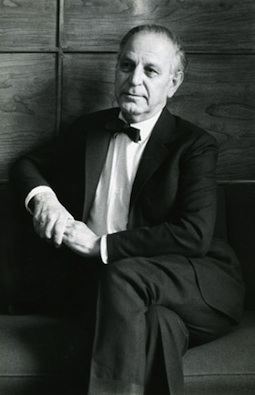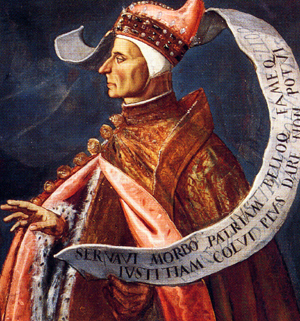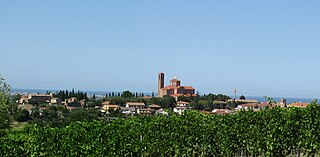Related Research Articles

The Italian Social Republic, known prior to December 1943 as the National Republican State of Italy, but more popularly known as the Republic of Salò, was a Nazi-German puppet state with limited diplomatic recognition that was created during the latter part of World War II, which existed from the beginning of the German occupation of Italy in September 1943 until the surrender of German troops in Italy in May 1945. The German occupation triggered widespread national resistance against it and the Italian Social Republic, leading to the Italian Civil War.
The Italian Co-Belligerent Air Force, or Air Force of the South, was the air force of the Royalist "Badoglio government" in Southern Italy during the last years of World War II. The ACI was formed in Southern Italy in October 1943 after the Italian Armistice in September. As by this point the Italian Kingdom had defected from the Axis and had declared war on Germany, the ACI pilots flew for the Allies.

Sergei Prokofiev wrote his Symphony No. 3 in C minor, Op. 44, in 1928.

Alfredo Casella was an Italian composer, pianist and conductor.

Neoclassicism in music was a twentieth-century trend, particularly current in the interwar period, in which composers sought to return to aesthetic precepts associated with the broadly defined concept of "classicism", namely order, balance, clarity, economy, and emotional restraint. As such, neoclassicism was a reaction against the unrestrained emotionalism and perceived formlessness of late Romanticism, as well as a "call to order" after the experimental ferment of the first two decades of the twentieth century. The neoclassical impulse found its expression in such features as the use of pared-down performing forces, an emphasis on rhythm and on contrapuntal texture, an updated or expanded tonal harmony, and a concentration on absolute music as opposed to Romantic program music.

Gian Francesco Malipiero was an Italian composer, musicologist, music teacher and editor.

Ulvi Cemal Erkin was a member of the pioneer group of symphonic composers in Turkey, born in the period 1904–1910, who later came to be called The Turkish Five. These composers set out the direction of music in the newly established Turkish Republic. These composers distinguished themselves with their use of Turkish folk music and modal elements in an entirely Western symphonic style.
Sinfonia antartica is the Italian title given by Ralph Vaughan Williams to his seventh symphony, first performed in 1953. It drew on incidental music the composer had written for the 1948 film Scott of the Antarctic.

The Symphony No. 4 in A major, Op. Posth. 90, MWV N 16, commonly known as the Italian, is an orchestral symphony written by German composer Felix Mendelssohn.

Marco Barbarigo was the 73rd Doge of Venice from 1485 until 1486. His nomination took place on a new staircase in the courtyard of the Doge's Palace, on an axis with the Campanile of St. Mark and the Porta della Carta.

Coriano is a comune in the province of Rimini. This town is known for being the town of the Motorcycle World Champion, in 250cc class, Marco Simoncelli.
The Symphony No. 5 in B-flat major, Op. 55, was written by Alexander Glazunov from April to October 1895. Although in this symphony Glazunov returned to his conventional four-movement layout he frequently utilizes thematic transformation.

Sandro Ivo Bartoli is an Italian pianist.

The Conservatorio di Musica Benedetto Marcello di Venezia, also known as the Venice Conservatory, is a conservatory in Venice, Italy, named after composer Benedetto Marcello and established in 1876.
The Violin Concerto No. 1 in A minor, Op.28 by Karl Goldmark was composed in 1877 and premiered in Bremen the same year. Goldmark later composed a second violin concerto, but it was never published, and is believed to be lost.
Symphony No. 2 in E minor was written by Wilhelm Furtwängler between 1945 and 1946 in Switzerland. It is in four movements:
- Assai moderato - Allmählich belebend - Von hier ab festes Tempo (Allegro)
- Andante semplice (Tranquillo)
- Un poco moderato - Più Allegro - Più Moderato - Allegro - Moderato - Allegro
- Langsam - Moderato andante - Allegro molto - Moderato - Langsam - Moderato - Presto

The National Republican Army was the army of the Italian Social Republic from 1943 to 1945 that fought on the side of Nazi Germany during World War II.
Anna Karenina is a ballet choreographed by Boris Eifman, based on the 1877 novel Anna Karenina by Leo Tolstoy. The première took place in Saint Petersburg on Saturday, 2 April 2005. The music is by Pyotr Ilyich Tchaikovsky and includes excerpts from:
Bohuslav Martinů's Symphony No. 2, H. 295, was composed from May 29 to July 24, 1943 under a commission from the Czech community in Cleveland. It was premiered by the Cleveland Orchestra conducted by Erich Leinsdorf on October 28 that year, which marked the 25th anniversary of the foundation of Czechoslovakia, then downgraded to a Czech protectorate and Slovak puppet state under German occupation.
The 3rd Marine Infantry Division "San Marco" was one of four divisions raised by Mussolini's Army of the Italian Social Republic. It existed from 26 November 1943 until 29 April 1945.
References
- ↑ Program notes from a 1969 Accademia Nazionale di Santa Cecilia concert, quoted in the Flaminio Virtual Orchestra's website